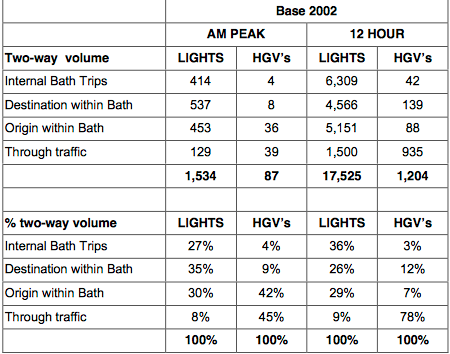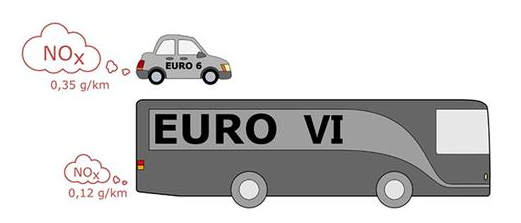A36/A46 Bath Link Road
As part of his ‘Stop Bath Stalling’ campaign MP for Bath, Ben Howlett, has reignited plans for an A36/A46 link road. A measure that Howlett believes is both ‘badly needed’ and will stop being Bath ‘being used as a roundabout’. Howlett raised the issue of the link road in the House of Commons in April, where Prime Minister David Cameron said he will “certainly have a look” at possibilities for funding the A36/46 link road.
A petition has been set up by Howlett, which he hopes will show the support of Bath’s residents for the proposed road. This means we should look closely at the arguments for and against the link road, before making up our minds about whether we support the proposal or not. Whilst there can be no doubt there is a need to reduce traffic travelling through Bath, especially along the London road and over Cleveland Bridge, is the A36/A46 link road the best solution?
Plans for a link road between the A36 and A46 were first drawn up 1980, alongside the three-mile Batheaston and Swainswick Bypass. But despite the £45 million bypass being built, and opening in 1996 against fierce opposition, the A36 link road was abandoned due budget pressure. Plans for a link road were mentioned again in 2004, and in 2007 it was estimated that the cost of the project would be £46m. This cost is likely to have risen significantly since then.
Supporters of the link road argue that it will redirect some of the traffic presently coming through Bath en route to elsewhere, in turn speeding up journey times, reducing congestion and improving air quality. This is true, but it is important to consider by how much will traffic be reduced, what would be the impact of building the link road (environmental and monetary) and if there are better ways to reduce traffic travelling along the London road and over Cleveland Bridge.
Traffic and Congestion
To understand the potential impact of the link we have to look hard at the effects it will have on the traffic flow from the London Road to the Warminster Road. The Bristol/Bath South Coast study (see fig 1.1) looked at the amount of traffic that flows over the Cleveland Bridge in Bath.

Measuring light vehicles versus HGVs, the study showed the difference in journeys being made by both. Of the 18,729 trips, only 13% was through traffic, meaning that the link road would not have a dramatic effect on the volume of traffic. The study found that 91% of light vehicle traffic was shown to either have originated in Bath, or for Bath to be the destination. However, 78% of HGV traffic is through traffic, which is a significant amount that could potentially be removed by a link road. Reducing HGVs from the city would definitely benefit Bath aesthetically.
The question the analysis above poses is threefold:
- Will removing HGV traffic increase air quality?
- Will removing the through traffic actually reduce congestion on the road?
- Is this the best way to reduce HGV traffic?
A Norwegian study in 2015 showed that diesel cars emit almost four times as much NOx than a HGV in a congested city environment (fig 1.2). It is understood that unless you establish proactive means of encouraging people to move away from over reliance of their cars, every vehicle you removed from the road will be replaced with another. This means you are actually left with the potential to decrease air quality, and have no positive effect on congestion and traffic flow. If you want to remove the flow of HGVs through Bath would it not just be easier and more effective to ban HGVs on the Cleveland Bridge?

Journey Times
I’m sure most drivers would be glad to avoid driving through Bath and getting stuck on the London road, but would the new link road save travel time? Unfortunately, there will be minimal time saved behind the wheel for drivers. The Atkins study quotes the expected reductions to be:
- Bradford on Avon to Bath: 5 minutes
- Trowbridge to Bath: 1 minute
- Chippenham to Bath: 2 minutes
- Salisbury to Cardiff: 18 minutes (out of 148 minutes journey)
At a cost of over £45m, a reduction of just a few minutes journey time is a minor gain.
Is a link road the best option?
It is undisputed that building the link road would impact the landscape surrounding Bath, affecting both a World Heritage Site and an Area of Outstanding Natural Beauty. A public inquiry held in 1990 rejected the proposed link road due to it being “intolerable in its landscape impact and devastating to recreational amenity”.
The cost of the link road, combined with the damage it would cause to the surrounding area, seems to outweigh the benefits. Whilst the link road would have an effect on the amount of traffic, is this enough to justify it? Especially when there are other options for reducing traffic and improving air quality. The link road, in conjunction with the proposed eastern park and ride may only serve to create more traffic flow into and around Bath also (https://transitionbath.org/bathampton-park-ride-analysis/).
As with the proposed park and ride, the aims of the project are undoubtedly the right ones (reduce congestion, reduce emissions, increase air quality). However, the A36/A46 link road does not seem to offer an answer that will satisfactorily solve the problem without creating new ones. Once again we find ourselves looking hard at the transport strategy for Bath and asking ourselves:
- Where is the strong emphasis on sustainable alternative transport?
- Why isn’t money being spent on bike lanes?
- Why are we not looking at innovative schemes, such as inner city parking levies (Notingham Workplace Parking Levy)
- Where are the park and cycle, cycle and ride, and link and ride schemes?
- Could we consider low emission zones?
There is no reason why Bath should not be at the forefront of pioneering sustainable transport cities, having a positive impact on the lives of all its citizens and underlining our status as a World Heritage Site and popular tourist destination.
Links
Claverton Parish Council Comments
Valley Parishes Alliance Comments
Bathford Parish Council
Atkins West of England Study
Bristol/Bath to South Coast Study – Final Report
http://www.bathchronicle.co.uk/A36-A46-link-road-Bath-agenda-30-years/story-27724298-detail/story.html
http://ben4bath.co.uk/news/a36a46-link-road